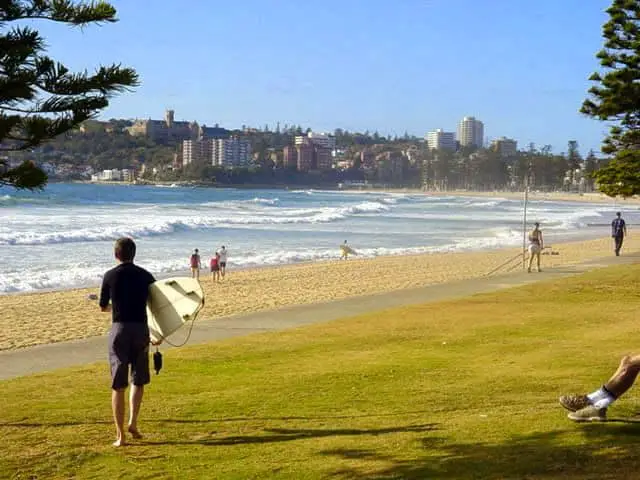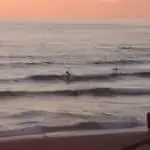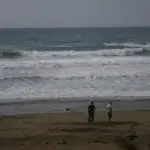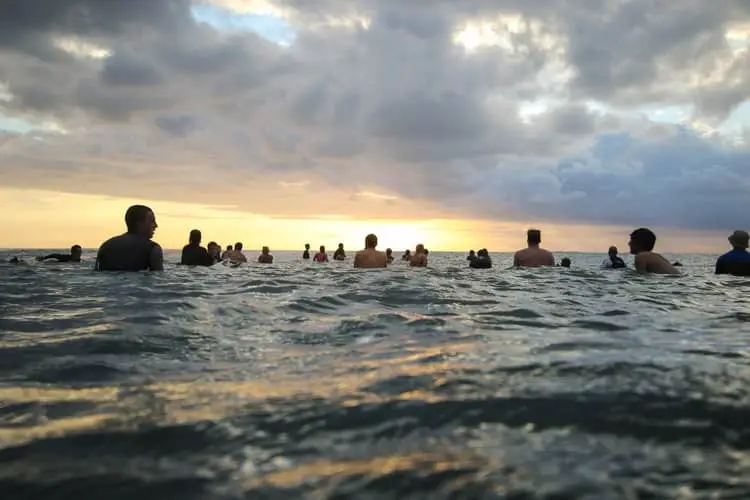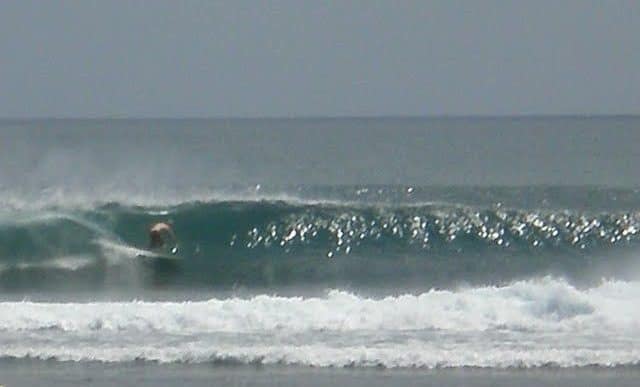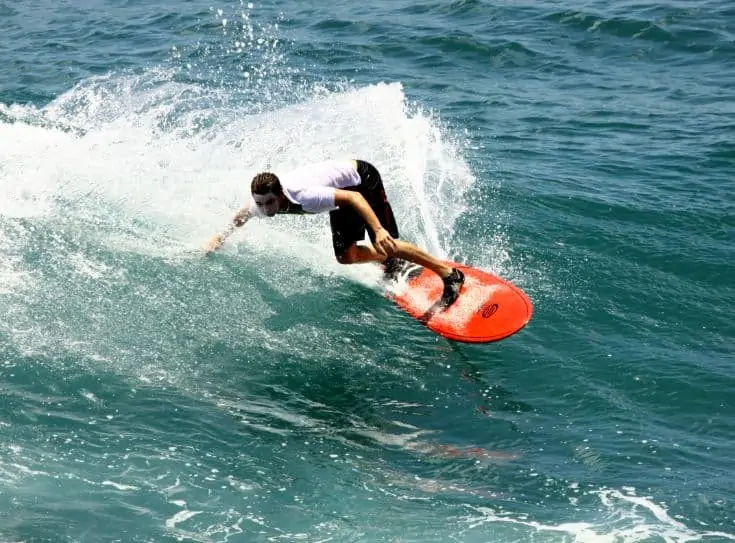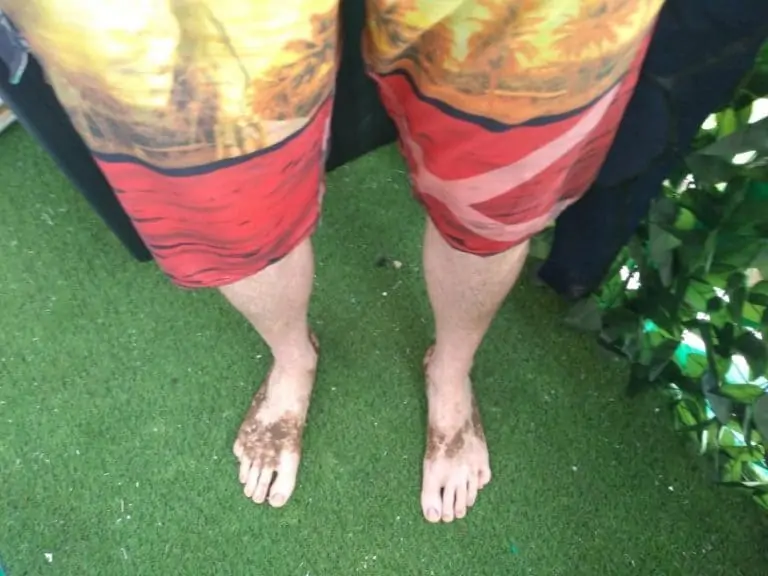Why Do Surfers Surf in the Morning? (Dawn Patrol Explained)
Surfers are often up early to get into the waves as soon as they can.
For non surfers, this might seem a little strange but there are a few key reasons why surfers do this.
So, why do surfers surf in the morning? The morning usually has lightest wind and least people, meaning more waves to choose from that are better quality and often more fun. However, the morning is not always the best time to surf, as we’ll explain below.
Wind
Wind in the morning is usually lightest, meaning many surfers try to get up early and hit the waves as soon as they can.
This is a good idea because wind can destroy waves for surfing, especially small ones.
This is because the wrong wind can make waves break less evenly and become more difficult for surfing.
The perfect wind for surfing is an offshore wind, where the wind blows from the land out to sea. This helps to give the waves a good shape for surfing as they break cleanly and evenly and are easier to ride since the wave ‘holds up’ for a little longer.
A common sign of an offshore wind is when you can see the spray of the waves blowing off the top of the breaking wave out to sea.
However, offshore winds aren’t always that common in the morning, it’s more that the winds are lighter in the morning so mornings are more appealing for surfers.
That said, there are also local climates where they do have common offshores in the morning but that really varies on where you are so pay attention to your local conditions to figure out what works near you.
Generally speaking, temperature changes from night to day lead to rising temperatures throughout the morning, especially over land. As the sun rises and it gets later into the morning, the increasing temperature over land then causes the colder air from over the sea to rush in and form an onshore wind, with wind speeds often picking up around mid morning.
Coming back to the points about strong winds, it can also be hard to stand up and balance on your
board when the wind is blowing hard, which usually happens later in the morning or into the afternoon.
It is hard enough standing up on a surfboard and riding a wave but, add in a gusty strong wind and it makes the job a lot harder!
You may also find that a strong offshore wind (which is not ideal) might even push you further out to sea as it blows across the surface of the sea.
Since you are on the surface of the sea with your surfboard, it is very easy to get taken in the wind without realizing it and a strong offshore wind later in the day can be an issue for surfing, although usually the winds turn onshore!
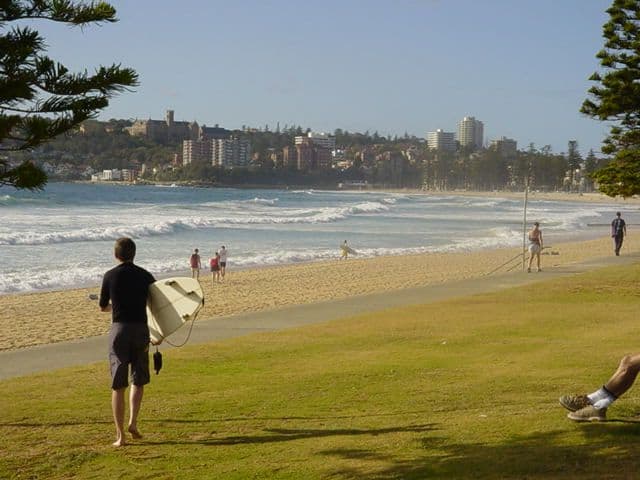
Photo Credit: Steve Bates
What wind is best for surfing?
A light, offshore wind is almost always the best wind for surfing. Offshore winds are good as they hold up the waves, which is particularly noticeable when the bigger, powerful waves are ‘barreling’. Onshore winds are usually bad news for surfers; this is where the wind blows in from the sea towards the land. Since this wind comes from behind the waves into shore, it has a flattening effect on the waves, often making them break more quickly and dumping a bit more than with an offshore wind.
On top of that, any ‘cross-shore wind’, which is any angle between onshore and offshore, is also bad for surfing since these winds chop up the waves making them harder to predict and ride.
Choppy surf is rough and bumpy, which causes you to lose speed on your board and then becomes more difficult to ride and less fun.
Crowds
Another major reason why surfers enjoy surfing in the morning is due to the lack of crowds.
Simply put: fewer people are up early in the morning so fewer people are in the surf.
With fewer people out in the waves, it means more waves for you to choose from. This then usually means getting quite a few more waves.
With more waves you can have a lot more fun and so it becomes a great time of day to surf.
Now, almost all seasoned surfers are aware of the benefits of getting up and surfing early so it still gets crowded at the most famous spots.
You will often find a hardcore group of surfers who will never miss dawn session, but at the average beach break getting up early is a good bet to score less crowded waves.
What is the dawn patrol?
The dawn patrol is a surfing term for getting up and going surfing early in the morning, usually at dawn or daybreak. Surfers have to be regimented and organized to get the best waves at the earliest time possible on the right day, hence the ‘patrol’ element of the term.
It’s also something of a badge of honor for surfers to be on the dawn patrol as it means getting the pick of the best waves of the day usually before friends and other local surfers, which is always a great feeling.
Why it’s NOT Always Best in the Morning
However, as mentioned near the beginning of this article, it’s not always best to go surfing first thing in the morning for a couple of reasons, as we’ll look at next.
Tide
This one really depends on your local spot and tidal range, but the tide can often be at the wrong stage for surfing first thing in the morning.
On an extreme high tide, some beaches will have a shorebreak, where waves dump directly onto the sand making it dangerous and almost impossible to surf. Even at beaches with less extreme high-tide conditions, you might still find that the waves are fat at high tide and not great for surfing. This again comes back to the shape of the beach, with most beaches having a steep angle at the part closest to the dunes or road.
At the other extreme, waves at low tide will often close out and dump, making them hard to surf. Surfing on low tide can also reveal exposed rocks or reef, making it more dangerous; again, this might not be at all beaches but it is certainly common at many spots around the world.
You will often see it written in surf guides that a spot gets too shallow to be surfed at low tide, so bear this in mind especially for reef breaks.
As tides vary day by day, it might also be that the tide is just too big of a tide for it to be good for surfing. This is most noticeable on spring and neap tides, but also on other bigger tides.
This happens because a large tide means the sea will be moving faster and more quickly, meaning that the best stages of the tide might be short-lived for your chosen spot or just that strong tidal movement of the water can affect how the waves break, and it’s not usually for the better.
Is it better to surf on an incoming or outgoing tide?
At most spots around the world, an incoming tide is best for surfing. This is because on this tide waves often have more of a push behind them, making them a little bigger and more powerful as the surging tidal movement is going in the same direction as the incoming waves.
It’s also better to surf on an incoming tide since the currents produced here will often push you into shore, whereas currents and rips on an outgoing tide usually push out to sea, which can obviously be dangerous for surfers.
Currents on outgoing tides can take surfers out to sea and make paddling back in against them quite hard.
From personal experience, I nearly drowned once in Indonesia after losing my board in an outgoing rip current and trying (but failing) to swim back in. The current was pulling strongly out to sea and the waves were a good size. It’s something I’ve never forgotten and certainly one to bear in mind.
Trade Winds
Not all climates have favorable trade winds first thing in the morning, despite the common wisdom to the contrary.
One of the most famous examples of this is Bali’s Bukit peninsula, which is a beautiful exception in surfing terms.
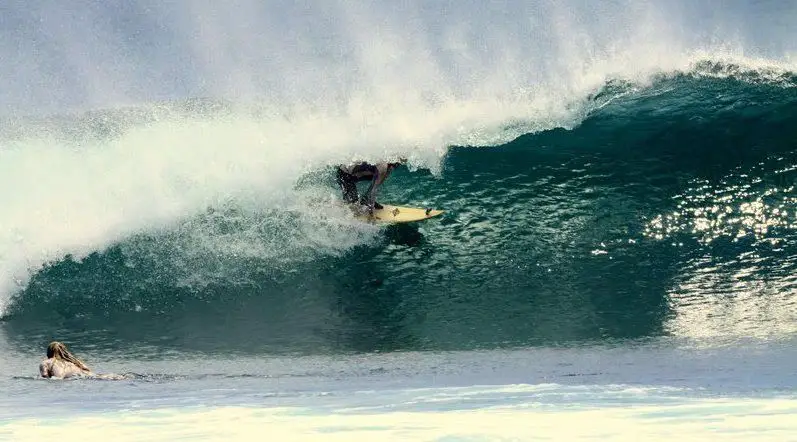
This is because, during the dry season months of April-September (when the waves are biggest and best), it is almost always better to surf mid-late morning as the trade winds are offshore.
This means that getting up early is not as ideal, especially when the winds can actually be more onshore at that time on the Bukit.
This interesting local phenomenon is known “morning sickness” where waves like Uluwatu, Padang Padang and Bingin often need a good few hours of the morning to really come alive and be groomed by the light offshore trade winds.
This is also a reason why Bali is so special in surfing terms and a reason why I lived there for nearly 3 years!
Related Questions
Can you surf before sunrise? You can surf before sunrise since daylight often starts before it, so you can see for around 40 minutes before the actual sunrise. Some surfers will even surf in the middle of night, but that is usually only with a full moon as otherwise it is impossible to see the waves coming and you will just get hammered by them!
If you want to check the earliest time that you could surf, google your local area and add in “first light” since this is the information you need, especially since it is up to 40 minutes earlier than the sunrise.
At the other end of the day, last light is also useful to know since it means you can plan a later surf knowing exactly how much time you will have before having to get out of the surf. That said, be careful when surfing until last light since you really don’t want to be the last person in on your own in the dark in case something happens, so take care if planning on a late surf.
Is surfing at dawn dangerous? Yes if you are in an area renowned for shark attacks, but otherwise no. This is because sharks feed at first and last light, so dawn and dusk, respectively.
The explanation for this is because they use the light that shines across the surface of the water to see their prey, while their prey cannot see them since the sun is not high up in the sky and does not light up the water below them.
That said, as a human, if a shark is stalking you, you aren’t going to see it anyway so I would not worry about that side of things!
Instead, pay attention to what the locals say and listen out for any stories of shark sightings and attacks and you should be fine.
There are tens of thousands who surf at dawn every day in places like California and Western Australia without any issues so just keep that in mind for context.
Why do surfers touch the wave? For two reasons: balance and speed control. Touching the wave helps surfers judge how far they are from the wave and gives an extra feeling without really looking or focusing on the wave below them. Putting a hand in the wave also slows surfers down.
This slowing down is often called a ‘stall’ and is most common when the wave is barreling and the surfer wants to stall to get into the barrel. This is because barreling waves are very powerful and fast and often push the surfer out onto the open face, yet they want to slow down to get back a little into the barrel.
It’s actually more like dragging a hand in the wave than touching it as the purpose is for drag, with some even putting almost their entire hand into the face of the wave for this reason!
